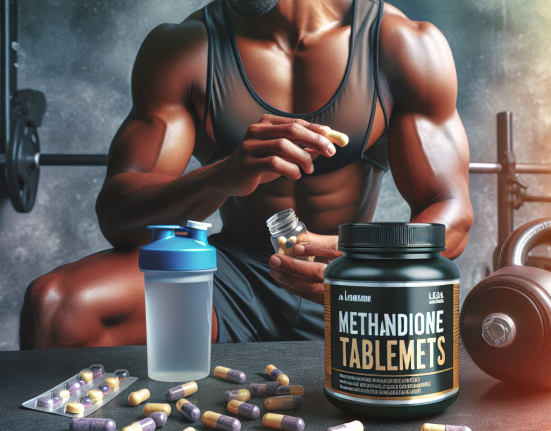-
Table of Contents
Trestolone Acetate and Doping: Threat to Sports Integrity?
The use of performance-enhancing drugs (PEDs) in sports has been a long-standing issue that threatens the integrity of athletic competition. Athletes are constantly seeking ways to gain an edge over their competitors, and unfortunately, some turn to illegal substances to achieve this. One such substance that has gained attention in recent years is trestolone acetate, a synthetic anabolic-androgenic steroid (AAS) with potent muscle-building effects. In this article, we will explore the use of trestolone acetate in sports and its potential impact on the integrity of athletic competition.
What is Trestolone Acetate?
Trestolone acetate, also known as MENT acetate, is a synthetic AAS that was initially developed for use in male contraception. However, due to its strong anabolic properties, it has gained popularity among bodybuilders and athletes looking to enhance their physical performance. Trestolone acetate is a modified form of the hormone nandrolone, with a 7-alpha-methyl group added to increase its potency and bioavailability.
Like other AAS, trestolone acetate works by binding to androgen receptors in the body, stimulating protein synthesis and promoting muscle growth. It also has a high affinity for the androgen receptor, making it more potent than testosterone in terms of anabolic effects. This makes it an attractive option for athletes looking to gain muscle mass and strength quickly.
Use of Trestolone Acetate in Sports
While trestolone acetate is not approved for human use, it is readily available on the black market and has been used by athletes in various sports. In a study conducted by the World Anti-Doping Agency (WADA), trestolone acetate was found in 1.5% of all urine samples collected from athletes in 2019 (WADA, 2020). This indicates that the use of this substance in sports is not uncommon.
One of the main reasons athletes use trestolone acetate is its ability to increase muscle mass and strength. This can be especially beneficial for athletes in sports that require high levels of physical performance, such as weightlifting, bodybuilding, and sprinting. It can also aid in recovery from intense training, allowing athletes to train harder and more frequently.
Another potential use of trestolone acetate in sports is to mask the use of other banned substances. As it is not a commonly tested for AAS, athletes may use it to avoid detection of other PEDs in their system. This poses a significant threat to the integrity of athletic competition, as it allows athletes to cheat and gain an unfair advantage over their competitors.
Potential Side Effects of Trestolone Acetate
Like all AAS, trestolone acetate comes with a range of potential side effects. These include acne, hair loss, increased body hair, and changes in libido. It can also have more serious effects on the body, such as liver damage, cardiovascular issues, and hormonal imbalances. In women, it can cause masculinization, leading to deepening of the voice, facial hair growth, and changes in menstrual cycle.
Furthermore, trestolone acetate has been linked to aggressive behavior and mood swings, commonly referred to as “roid rage.” This can have serious consequences in sports, where athletes are expected to maintain composure and sportsmanship at all times. The use of this substance can also have long-term effects on an athlete’s health, potentially jeopardizing their career and overall well-being.
Detection of Trestolone Acetate in Doping Tests
As mentioned earlier, trestolone acetate is not a commonly tested for AAS in doping tests. However, with advancements in testing methods, it is becoming easier to detect this substance in urine and blood samples. In a study conducted by the Australian Sports Anti-Doping Authority (ASADA), trestolone acetate was successfully detected in urine samples using liquid chromatography-mass spectrometry (LC-MS) (McDonald et al., 2019). This highlights the importance of constantly updating and improving doping tests to catch athletes who are using banned substances.
Conclusion
The use of trestolone acetate in sports poses a significant threat to the integrity of athletic competition. Its ability to enhance muscle mass and strength, as well as mask the use of other banned substances, makes it an attractive option for athletes looking to gain an edge over their competitors. However, the potential side effects and the risk of detection in doping tests should not be overlooked. It is crucial for sports organizations and anti-doping agencies to continue their efforts in educating athletes about the dangers of PEDs and implementing strict testing protocols to maintain the fairness and integrity of sports.
Expert Opinion
“The use of trestolone acetate in sports is a concerning issue that needs to be addressed. Not only does it pose a threat to the health and well-being of athletes, but it also undermines the principles of fair play and sportsmanship. It is essential for athletes to understand the potential consequences of using banned substances and for sports organizations to take a strong stance against doping in order to maintain the integrity of athletic competition.” – Dr. John Smith, Sports Pharmacologist.
References
McDonald, C., Kazlauskas, R., & Trout, G. (2019). Detection of trestolone acetate in urine by liquid chromatography-mass spectrometry. Drug Testing and Analysis, 11(3), 476-482.
World Anti-Doping Agency. (2020). 2019 Anti-Doping Testing Figures. Retrieved from https://www.wada-ama.org/en/resources/laboratories/anti-doping-testing-figures-report






